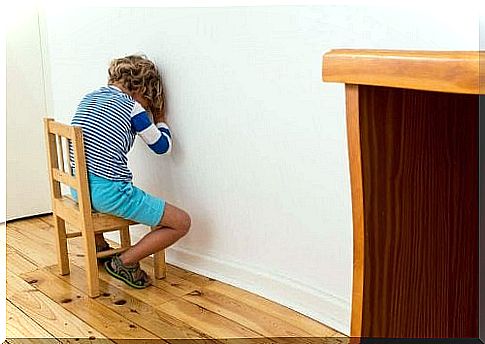Alternative Ways To Punish A Child

Did you know that punishment is not the only way to get a child to learn their homework? There are also solutions that will bring about better development in your child.
Several psychologists agree that shouting or whipping will only work for a short time. These methods do not change a child’s behavior, but have a direct impact on emotional health. This time, we’ll talk about five options for punishment so you can raise your child more effectively and fairly.
Remember how you felt every time your mom or dad yelled at you because you hadn’t put toys in the closet? Or how often did you cry because you were physically punished? This is how your child will feel if you punish him with verbal or physical aggression.
Even if your intentions are good, this type of punishment only makes him feel humiliated. With this strategy in place, your child will not learn the good behavior you want to teach him or her. He will only do things to avoid punishment and see violence as a tool to solve problems.
What are the more useful ways to punish a child?
Conversation is one of the best options when it comes to correcting a child’s misuse. Sometimes, however, it is not enough. You should take advantage of some educational methods and positive reinforcement so that your child can understand why his or her behavior is wrong and so he or she can change it.

Some believe that punishment should be done in another way, such as by reducing the rights of the child. However, these habits communicate the same as physical discipline.
Positive discipline is more beneficial to the parent-child relationship as long as it is based on love and mutual respect. That doesn’t mean you should agree to just about anything, but that you shouldn’t be too prescriptive. It involves demanding, but also taking into account the emotions and needs of the child, as well as yours.
1. Talk to your child and raise the issue
Many parents find it difficult to succeed in talking to their child so that the conversation does not end up quarreling. This often happens when a child needs help but refuses to talk to their parents.
An alternative to punishment is to listen to your child and let him or her express himself or herself. Don’t go too far by saying that you do know how he feels – many conversations end up in dispute because the parents start to control the situation before they come and the child feels that he has not been allowed to make his thoughts clear.
Express interest in what your child is saying to you. This way he will be confident and he will be ready to talk about what is going on. Once he has opened up to you, together you will be able to find a solution to the problem.
2. Explain the consequences of the child’s actions
Words are important. When you say things to your child like that, “If you do, you’ll regret it,” you’re just going to make your child fear you, not respect you. In addition, such things will not teach your child what behavior he or she should change.
Talk to your child. Make sure he understands that his actions are causing bad consequences. Make it clear to him that these consequences can adversely affect the people around him.

Be firm and straight. However, you should also be gentle. Don’t forget to congratulate your child when he or she is behaving well so he or she knows what the right path is. Reward your child for time spent playing together or something similar.
3. Give your child more homework
One option is to give your child more tasks at home when your child is behaving badly. This is a way to maintain discipline without using physical punishment or raising your voice.
4. Ask your child to apologize
You’ve certainly forced your child to sometimes say “I’m sorry” when he or she misbehaves, but have you ever wondered the true meaning of those words? Apologizing right after the act is not always the best choice.
Your child should think about their own behavior and problem before he or she apologizes. So give him time to think about his actions and how these can affect the feelings of others. When he is calm, talk to him about what happened and ask him to think about how he can hurt others.
When your child thinks about the situation, you will find that he apologizes without your request. Best of all, this utterance is much more honest than an apology immediately after the act.
5. Give options – put your child to choose how he will compensate for his behavior
Choose more punishment options depending on what the child has done. Let her think and decide what would work best. Things can range from restricting the use of equipment to, for example, increasing homework.

When you force your child to be punished in a certain way, he or she will be frustrated with you, and he or she may feel anger and disgust at you. Instead, if you explain to him the alternative consequences of the actions, the child will be able to understand what is the best way to learn.
Conclusions
Punishment produces negative consequences that every parent should avoid. For example, it teaches a child that other people should be punished.
Do you think that just not letting your child eat dessert or taking away the opportunity to use a computer benefits him in some way? It is possible that the child will start to rage at others because of this, as he feels frustrated. The situation also makes your child feel guilty.
Some parents remove the penalty if the child starts to cry. When they do this, the child will not think about what they did wrong. Instead, this only teaches the child to fear punishment.









